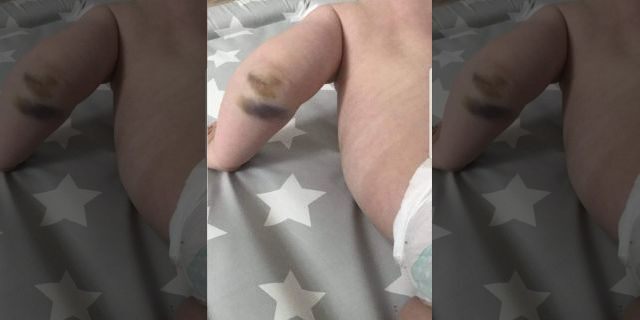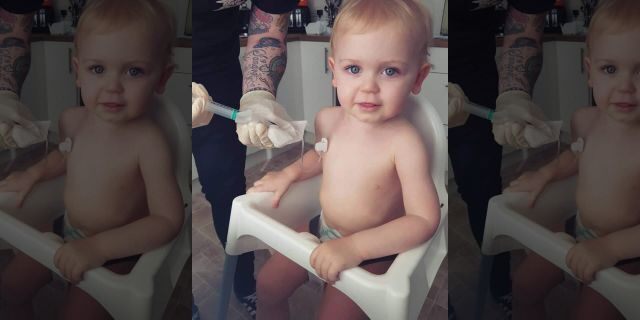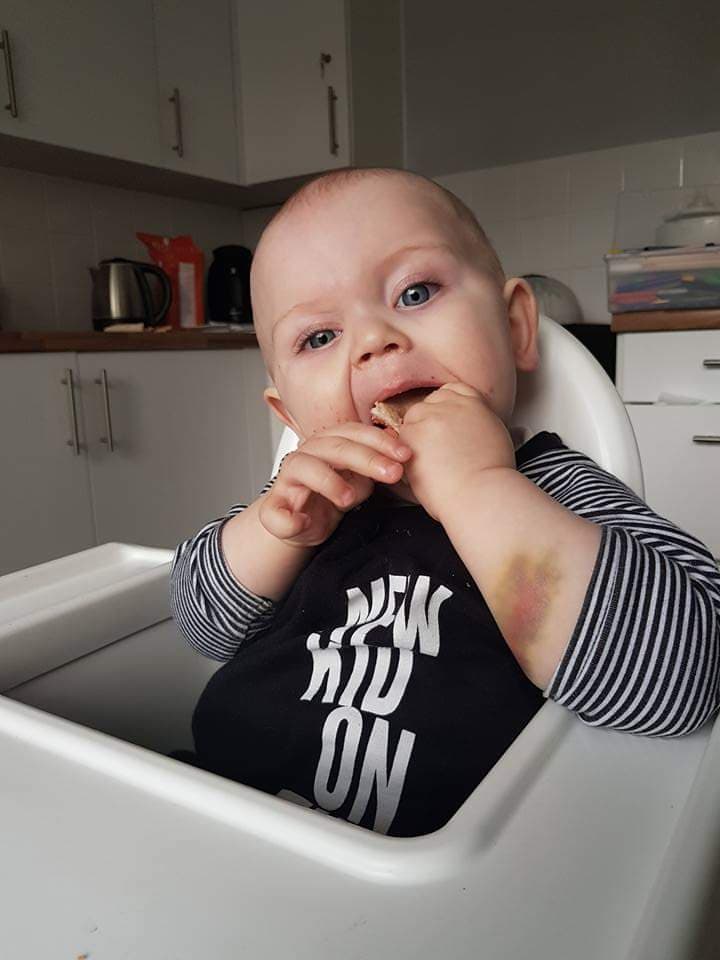[ad_1]
When doctors first saw the bruises covering 6-month-old Jack Fearns’ body, they were concerned the young boy was a victim of abuse.
His parents, Tom and Darryl-Anne Fearns, of Widnes, England, explained they had noticed their second child – who is 2 years old today – would develop bruises for seemingly no reason.
Doctors questioned if they had been hurting their son, the Fearns claim, but within 48 hours they diagnosed him with hemophilia, a rare blood condition that affects the blood’s ability to properly clot.
VAPING LINKED TO 8 TEENS TREATED FOR BREATHING ISSUES, CHEST PAIN, HOSPITAL SAYS
Those with the condition are either missing or have low levels of a clotting protein called factor VIII, or FVIII. Large, deep bruises, pain or swelling in joints and unexplained or excessive bleeding are common signs.

Jack Fearns, now 2, has a rare blood condition called hemophilia.
(Tom Fearns)
“It made us feel very upset. We already felt extremely anxious with concern for Jack but to have people think of you as someone potentially harming your child added a lot of unnecessary stress to an already stressful situation,” Tom Fearns, 29, told Fox News.
A blood test confirmed Jack’s diagnosis of hemophilia A, his father, who declined to say where Jack was treated, said.
When Jack received the diagnosis, Fearns said he and his wife, 27, were “very relieved” before becoming engulfed in worry.

The young boy receives at-home treatment for the rare disorder every 72 hours.
(Tom Fearns)
“It felt like a weight had been lifted to talk to people who understood what was happening and why,” he said. “But that’s when we realized we were faced with the reality of having a child with a bleeding disorder. It was suddenly very overwhelming, especially as we didn’t know anything about hemophilia.”
Jack likely inherited the condition from his mother, who later found out she was unknowingly a carrier of the disorder.
CLICK HERE TO GET THE FOX NEWS APP
Hemophilia, according to the Centers for Disease Control and Prevention (CDC), is caused by a mutation in “one of the genes that provides instructions for making the clotting factor proteins needed to form a blood clot.” It’s rare; roughly 400 babies are born with hemophilia A each year in the U.S.

A baby Jack is seen here with a large bruise on his arm. (Tom Fearns)
Women who carry (either knowingly or not) an affected X chromosome can pass the disorder down to their children, even if they themselves do not have any symptoms of hemophilia, per the CDC. Sons of female carriers have a 50/50 chance of inheriting the disorder, while daughters have the same odds of being a carrier.
Following Jack’s diagnosis, Darryl-Anne learned that she inherited the gene from her mother, she told the Daily Mail.
“She has bruised easily her whole life and never knew why,” she told the U.K.-based outlet of her mother.

“It felt like a weight had been lifted to talk to people who understood what was happening and why,” Tom Fearns said. (Tom Fearns)
Though there is no cure for the blood disorder, treatment is available. Tom said Jack receives clotting factor concentrates intravenously to replace the blood clotting factor missing from his body. He receives an injection every 72 hours.
While the young boy has “good and bad days,” his father said he’s doing well.
“I think for the first time since his diagnosis we finally feel like his condition and treatment are comfortably part of our everyday routines,” he said. “Jack takes everything in his stride and his resilience has made this experience much more positive than we could have ever imagined.”

Jack’s parents now accustomed to helping their son manage his condition.
(Tom Fearns)
That said, Jack will not be able to play contact sports as he gets older, and his parents worry when he roughhouses with his older brother, 5-year-old Thomas.
While the couple “understands and absolutely supports safeguarding,” it is important “to run tests to rule out medical conditions before jumping to conclusions” in certain situations, they said, referring to when there were allegedly concerns they were physically abusing Jack.
“It felt like a weight had been lifted to talk to people who understood what was happening and why.”
Looking back, Tom said he and his wife wish they had known “everything will be OK.”
“Since Jack’s diagnosis we have faced a lot of roadblocks in terms of medical complications and we have been in situations we thought we would never get through. But of course, we did. Nothing is ever final,” he said. “You do eventually adapt to life with hemophilia and, although it takes time, life becomes pretty normal.”
[ad_2]
Source link

